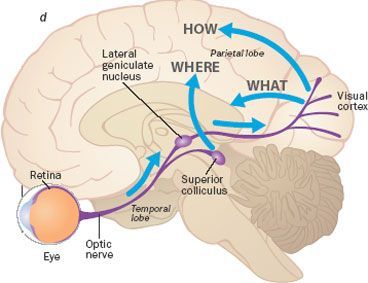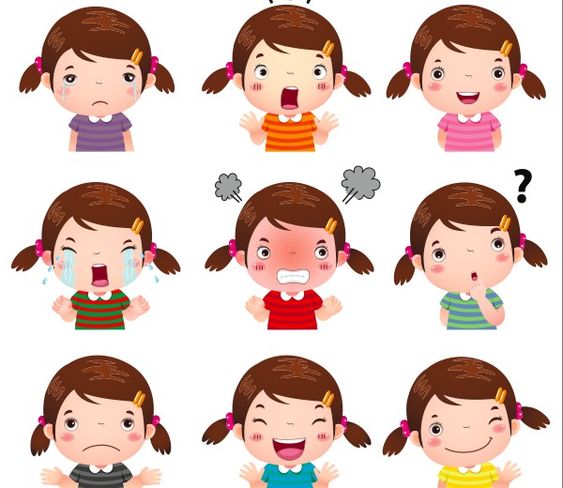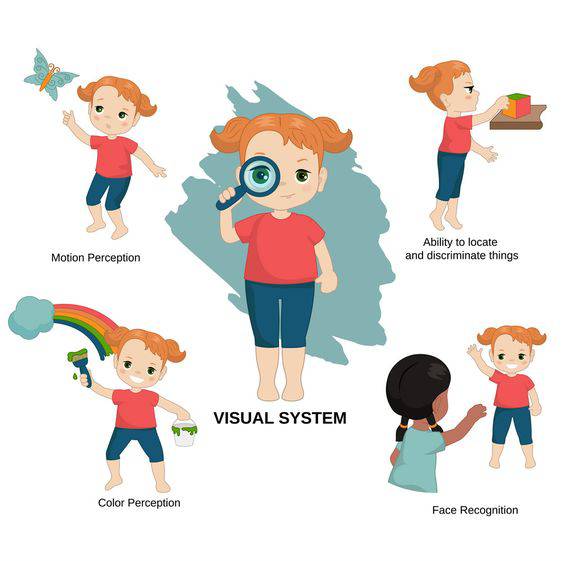The Art of Seeing: Why Perceptual Vision Matters?
Have you ever stopped to think about how your brain processes the visual world around you? Vision is not just about seeing; it’s about perceiving and making sense of what we see. This complex cognitive process, known as Visual Information Processing (VIP), is what allows us to understand, interpret, and add value to the visual information we receive from the world. In this newsletter, we explore into the fascinating world of VIP and the crucial role it plays in our daily lives.
What is the Visual Information Processing (VIP)?
VIP involves the use of our brain’s visual cognitive abilities to extract, organize, and integrate visual information from our environment. It’s like a toolkit that helps us process information from our surroundings and connect it with our other senses and higher-level cognitive functions. Whether it’s reading a book, working on a computer, playing sports, or understanding someone’s facial expressions, VIP is at the heart of these activities [1].

(Slotnick, 2014)
However, when someone struggles with VIP, it can significantly impact their learning and daily life. Students with reading difficulties, learning disabilities, dyslexia, or ADHD often face these challenges. Imagine having a key tool missing from your toolkit; it can make everyday tasks more challenging. Understanding and supporting VIP is essential for helping these individuals thrive [1].
What is the significance of visual perceptual skills?
Visual perceptual skills are the building blocks of VIP, allowing us to process visual information effectively. These skills are vital for interpreting the world, making informed decisions, and interacting with our environment. Here are some of the reasons why perceptual skills matter:
- Identifying Objects: Perceptual skills help us distinguish between objects like cats and dogs, or apples and oranges.
- Understanding Speech: We use these skills to recognize different sounds and spoken language.
- Navigating Space: Perceptual skills are essential for reading maps, judging distances, and understanding spatial relationships.
- Interacting with a 3D World: Whether it’s catching a ball or driving, these skills are crucial for safely navigating a three-dimensional environment.
- Categorizing Objects: Recognizing familiar faces, managing schedules, making predictions, and problem-solving are all made possible by perceptual skills.


What are the visual information processing categories?Visual Information Processing is a complex concept, and it can be broken down into various categories, including:
- Bilateral Integration
- Visuospatial
- Visual Analysis
- Visuomotor
- Auditory-Visual Integration
What are the visual perceptual analysis skills?
- Visual Discrimination: The ability to recognize differences and similarities among objects or symbols based on their visual characteristics, such as shape, size, colour, or pattern. This skill is fundamental for reading and math, as it helps individuals differentiate between various words, letters, and numbers. When ‘b’ and ‘d’ look the same, reading a book becomes a challenging task, and it can affect one’s sense of direction [1].
- Visual Memory: The capacity to store and recall visual information, allowing us to remember and identify objects, patterns, or details over time. This skill is like having a mental photo album that you can flip through whenever you want, even when the real thing isn’t in front of you [1].
- Visual Spatial Relationships: Understanding the spatial arrangement of objects in relation to one another, including position, orientation, and direction. This spatial awareness is like having a built-in GPS for your brain. When it doesn’t work smoothly, it’s like navigating without a map [1].
- Visual Form Constancy: The capability to recognize an object or form regardless of changes in size, position, or orientation. For example, you can recognize a mango, no matter what you do with it, whether you make it bigger or smaller or flip it upside down or if it is in a photo or a basket [1].
- Visual Sequential Memory: The ability to remember and reproduce a sequence of visual information accurately. This skill is like having a ‘mental order keeper’ in your brain, crucial not only for academics but also for language and vision development [1].
- Visual Figure-Ground: The capability to differentiate a specific object or figure from its background in a complex visual scene. It’s like having a ‘visual detective’ in our brains, allowing us to spot the object we’re interested in from the background [1].
- Visual Closure: The skill to identify a complete object or pattern when presented with incomplete or fragmented visual information. This skill helps individuals deal with incomplete or hidden images [1].
How we can assess perceptual skills?
Measuring perceptual skills is crucial to understanding an individual’s abilities and needs. The Test of Visual-Perceptual Skills (TVPS-3) is a standardized assessment tool that evaluates seven different visual perception skills. It is a non-language-based assessment that helps identify strengths and weaknesses in an individual’s visual perceptual abilities, providing valuable insights and guiding treatment plans [2]. This test is currently available in Vision Care Optical Services Pvt Ltd.
Who can benefit from perceptual skills assessment and therapy?Perceptual skills assessment and therapy can benefit a wide range of individuals, including children and adolescents, those with ADHD, dyslexia, autism, cognitive or speech difficulties, motor impairments, and those experiencing poor academic performance, especially in reading.
What is the therapy protocol?
Therapists use various methods to enhance perceptual skills, such as activities to improve visual discrimination, bilateral integration, spatial awareness, and more. These therapies aim to strengthen the foundation of VIP and, in turn, boost an individual’s overall cognitive abilities [2].
What are the research insights?
Recent studies have shed light on the connections between visual-perceptual skills and various conditions like autism spectrum disorder (ASD), academic achievement in school children, Down syndrome (DS), and the potential of technology-assisted interventions in improving visual-perceptual skills.
- DiCriscio et al. (2021) delved into the variability of visual-perceptual skills, revealing significant linear relationships between perceptual performance and autism spectrum disorder (ASD) features. [2]
- De Waal, Pienaar, and Coetzee’s work (2018) illuminates the connections between different visual-perceptual constructs and academic achievement in school children. [3]
- Wan et al.’s characterization of visual perceptual functions in Down syndrome (DS) and Brown, Rodger, and Davis’s critique of visual perceptual assessments offer important insights into the landscape of perceptual research. [4]
- The randomized controlled trial by Wu et al. (2022) demonstrates the potential of technology-assisted interventions in improving visual-perceptual skills, which resonates with our investigation of perceptual skills training. [5]
References
- Borsting, E. (2006). Overview of vision efficiency and visual processing development. In M. M. Scheiman & M. W. Rouse (Eds.), Optometric management of learning-related vision problems (pp. 35-68). St. Louis, MO: Mosby Inc.
- A S, D., J, S. & V, T., 2021. Comprehensive Assessment of Visual Perceptual Skills in Autism Spectrum Disorder. Frontiers in psychology, Volume 12.
- B, T., R, S. & D, A., 2009. Test of Visual Perceptual Skills–Revised: An Overview and Critique. Scandinavian Journal of Occupational Therapy, 10(1), pp. 3-15.
- de W, E., E P, A. & C, D., 2018. Influence of Different Visual Perceptual Constructs on Academic Achievement Among Learners in the NW-CHILD Study. Perceptual and Motor Skills, 125(5), pp. 966-988.
- W L, W. et al., 2022. Interactive Digital Game for Improving Visual-Perceptual Defects in Children With a Developmental Disability: Randomized Controlled Trial. JMIR Serious Games, 10(2), p. e34756.
- Y T, W. et al., 2015. Profiles of visual perceptual functions in Down syndrome. Research in developmental disabilities, Volume 37, pp. 112-118.
- Press, L. J., 1997. Applied Concepts in Vision Therapy, with Accompanying Disk. s.l.:Mosby.
- Martin, N. A., 2006. Test of Visual-Perceptual Skills (TVPS-3). 3rd ed. s.l.:Academic Therapy Publications.
- Slotnick, S., 2014. No Brain, No Gain! …Going beyond the EYE. [Online]
Available at: https://drslotnickblog.com/2014/04/no-brain-no-gain-part-1/

